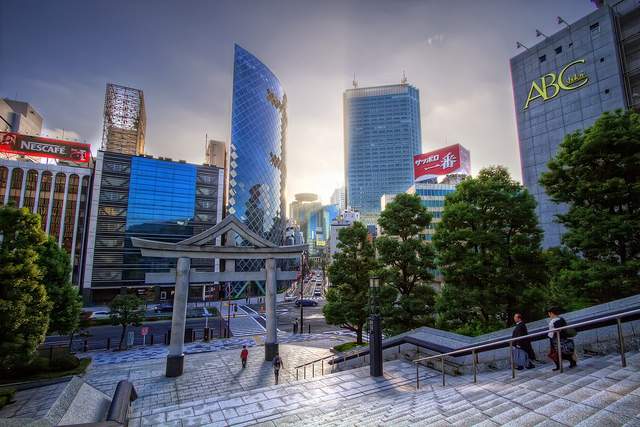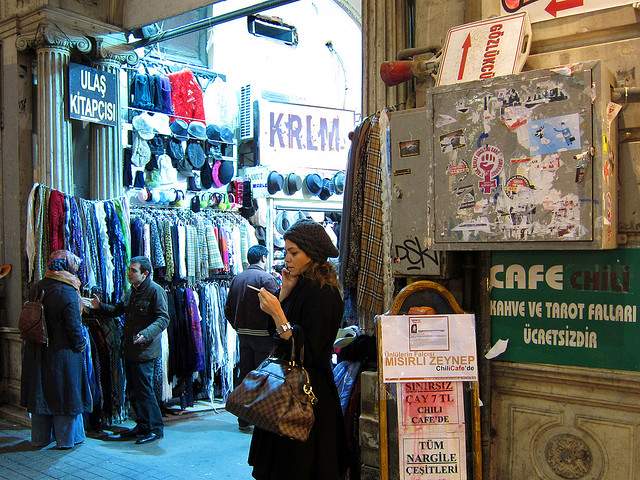I am sitting in a city of contrasts. It is a place where stately old houses stand not far from gleaming postmodern skyscrapers. Downtown, new restaurants are popping up in old warehouses and restored buildings. It is a city where many people lived their whole lives in the same neighborhood, yet a large portion moved here from somewhere else. It is a city with million-dollar homes and neighborhoods of shanties. Here, summer days are hot, yet winter evenings are cool. What a city of contrasts this is!
Does it really matter where I am? So many travel articles have utilized the moniker “city of contrasts” that it no longer has meaning. This phrase is the amateur (and sometimes, professional) writer’s cop-out, and I wanted to investigate this cliché further. Of course, I went directly to the internet for my research, where I was able to uncover many more cities of contrast than even I had imagined. Some were described that way by tourist bureaus, some by bloggers, and others in top publications.
Calcutta is a city of contrasts. As is Jerusalem. And Budapest. Don’t forget Hong Kong: City of Contrasts. Frankfurt, of course. And the list reaches absurdity: Baltimore, Lagos, Jakarta, Mumbai, Soweto, Beirut, Phnom Penh, Mosul, Seattle, Boston, Leicester, Calcutta, Bangkok, Kumamoto, Chisinau, Albuquerque, Stockholm, Philadelphia, Lisbon, Leon, Berkeley, Barletta, Beijing, Edinburgh, Cambridge, L’viv, Tallinn, Oakland, Nashville, Rio, Dubai, Thessaloniki, Cleveland, London, Dallas, Limerick, Boulder, Vancouver, Seoul, and the Hague. Of course there are more.
I had not yet discovered enough cities of contrast, so I thought of cities which would not be traditionally considered “cities of contrast.” After typing each city name into my search engine, I discovered the error of my ways. Odessa, Texas (anybody ever been there?) must be fascinating, as it is a city of contrasts. Albany is indeed a city of contrasts. Wacky, wild Albany! And, the city which iced the cake of cliché: Aurora, Illinois, suburb to Chicago (itself a city of contrasts), is, undoubtedly, a city of contrasts.
We all seek the unique when we travel, and our senses notice the unusual, which must be why writers use this phrase so often. They want to distill the essence of a destination in one easily-swallowed sentence, so they fall back on “city of contrasts.” What makes Hanover unique? What is interesting about Sioux Falls? I wonder if each author thought that this phrase was original, that this was the best description. Certainly, it seems that every city is a city of contrast.
What makes a city one of contrasts?
After reading about cities of contrast, it was easy to distill the contrasts into easily digested reasons: The first reason a city would be a city of contrast is that both poor people and rich people live there. Los Angeles, Rio, and Soweto, are among those cities described this way.
The second oversimplified reason is that many cities have both old and new buildings. It is the enterprising writer who first thought of that unique fact. Here, stories have included Kuala Lumpur, Beijing, and even Edinburgh.
But my favorite reason is no reason at all. What better reason can there be than that? As I learned on the TV show Househunters International, “Stockholm is a city of contrasts. It has a culture rich in history & innovation. Because of this, trendy Stockholmers have made this city one of the art & design centers of the world.” I still don’t see any contrast in that. Albuquerque is a city of contrast because the chamber of commerce declares it to be true.
This blither blather disguising itself as description becomes entertaining. The irony of contrast is this: how can a passage of text describe nearly every city in the world without identifying any city in particular? That is contrast within contrast. Explore these descriptions to see if you can identify the city:
1) A city of contrasts quickly modernizing yet celebrating the cornerstones of [its] history. Modern yet traditional.
2) _________ is a city of contrasts and harmony — A city of the past, the present, and the future — A vibrant blend where the creative and the traditional come together in a warm-hearted people ready to welcome you in your travels.
3) _________ is a city of contrasts. East meets west, land meets sea, fantasy meets history, yin meets yang.
Couldn’t you input any world city into each of the descriptions? Try your hometown. I bet it fits. I hope that some aspiring travel writers and editors alike will learn from this wisdom. According to blogs, the first is Chelyabinsk and the second Kumamoto. The third (per aarp.com) defines Venice. While I can understand the land meeting the sea, I am still puzzled by the yin and yang.
This year I plan to visit some places where I can visit historical landmarks as well as modern buildings. I will likely eat some local food, but I may see some chain restaurants, also. In this unique city, there will be people rushing off to work, yet others will be relaxing. I can only hypothesize that some will live in mansions, while others may live in relative squalor. I wonder if it will have both a symphony and a vibrant youth culture. It will be my quest to find this strange city, and when I do, I shall surely write an article about it.
Now if only I could think of a title.
Other common travel writing clichés
Not all clichés are bad, if used sparingly. Sometimes a cliché is the best way to quickly communicate an idea that many people are familiar with. But if most of your sentences reference things like the “snow-capped peaks” that rise above the “bustling market” or the “sun-dappled beach” that is a real “hidden gem” – you might be overdoing it. Here are a few more pitfalls to watch out for in your writing.
- Describing a scene or view as breathtaking. Perhaps it was so beautiful it took your breath away. Maybe something was so amazing you were actually stunned or found yourself inspired with awe…but generally these are hyperbolic statements used because you can’t figure out any other way to describe something. Try to find a new way to describe the scene.
- Ending your narrative with “I can’t wait to go back” or trying to come to a tidy conclusion that doesn’t fit.
- Using the phrase “don’t-miss destination” or “can’t miss” or saying one “cannot go to [place] without doing.” It might be a “must” for you, but it’s better to let the reader decide which spots they simply have to see.
- Writing about “where East meets West.” By definition, East meets West wherever you’re standing. Think about that one for a minute!
Guilty of the above crimes? You’re not alone and not many writers would step forward to cast the first stone. Improve your skills by attending travel writing conferences like Book Passage and TBEX to learn from the experts, or check out more tips and resources for writing well.
- Should You Start a Travel Blog?
- Written Road travel writers resource
- Everything You Think You Know About Travel Writers is Wrong
- Lessons Every Travel Blogger Can Learn from TBEX
Learn more about author Matthew Stone and read his other articles here.
Photos by: ratamahatta, Dr. Case

